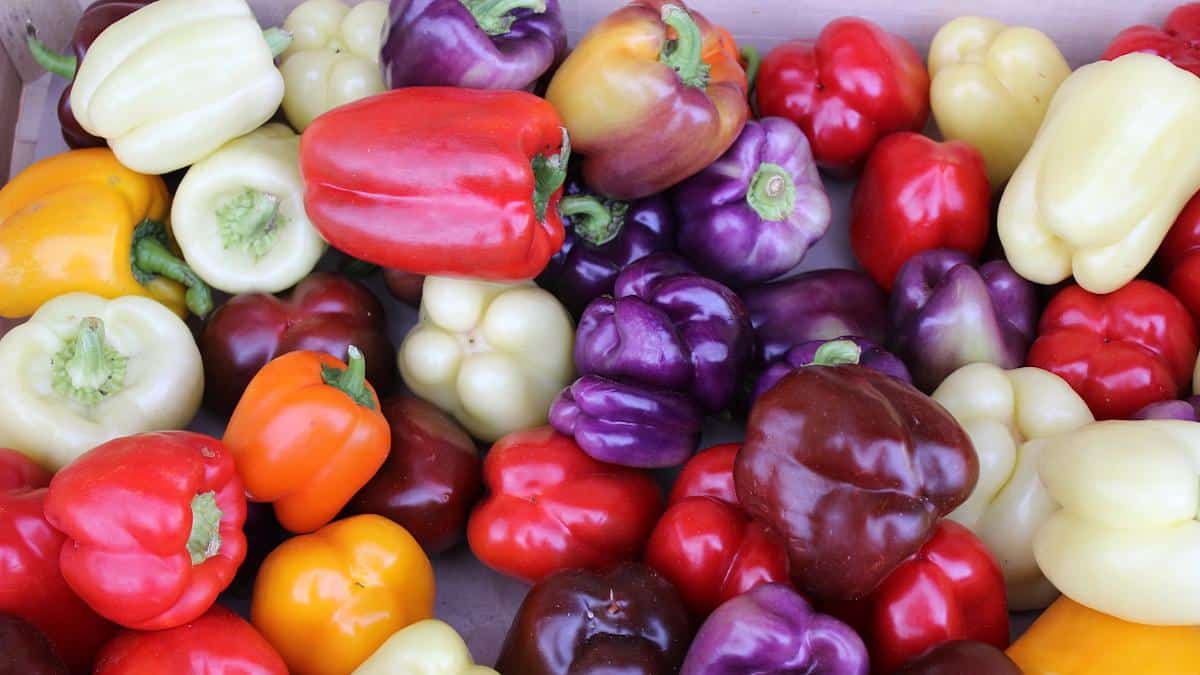
Want to Avoid Pesticides? Check Out This Annual Produce Guide

Bell peppers were added to the EWG's 20201 "Dirty Dozen" list. Michelet-密是力 (talk)
Are you worried about getting a serving of pesticides with your produce?
The Environmental Working Group (EWG) released on Wednesday its annual “Dirty Dozen” and “Clean Fifteen” lists of the most and least pesticide-heavy conventional fruits and vegetables in the U.S.
“It’s a really great resource,” Jane Houlihan, the national director of science and health for Healthy Babies Bright Futures, who was not involved with its compilation, told CNN. “By nature pesticides are toxic, and doing what you can to reduce exposures is a really good idea to protect your family’s health.”
The EWG’s annual lists are based on testing data from the U.S. Department of Agriculture (USDA). The USDA firsts washes, peels or scrubs the produce then tests it for pesticide residue. Almost 70 percent of the non-organic fresh produce sold in the U.S. contains pesticide residue, the EWG said in its report.
But still, some foods are more contaminated than others. Strawberries and spinach topped the list as repeat offenders. However, there were some notable new additions, EWG toxicologist Thomas Galligan told USA Today.
- Collard and mustard greens joined kale in the No. 3 slot. These vegetables were most commonly contaminated with DCPA, which the U.S. Environmental Protection Agency (EPA) says is a possible carcinogen.
- Bell and hot peppers were added to the list, in the No. 10 slot. The USDA found a total of 115 pesticides on different peppers.
In addition, the EWG drew attention to the prevalence of a fungicide called Imazalil on nearly 90 percent of citrus samples tested by the EWG in 2020 and more than 95 percent of tangerines tested by the USDA in 2019. Imazalil can alter hormone levels and is classified by the EPA as a likely human carcinogen. The fruits tested positive for the fungicide despite being peeled, CNN noted.
“I have said repeatedly that that fruits and vegetables with rinds that you don’t eat are less problematic,” Dr. Leonardo Trasande, chief of environmental pediatrics at NYU Langone, who was not involved with the study, told CNN. “I’m quite frankly surprised and concerned that you can see fungicides penetrate to that level.”
Pesticides are especially dangerous for children, and have been linked to childhood cancers, cognitive impairment and behavioral problems, as the American Academy of Pediatrics noted in 2012. One pesticide found on Dirty Dozen items apples, peppers, oranges, grapes and cherries is chlorpyrifos, CNN noted. This pesticide, which the Trump administration refused to ban, has been found to harm the development of children’s brains. The Biden administration is now reviewing this decision.
While Trasande and Houlihan praised the list as a resource for health-conscious parents, industry groups criticized it for frightening shoppers away from healthy food.
“Scaring Americans away from eating foods that are a safe and vital part of our diet is a disservice to public health,” Chris Novak, the president and CEO of pesticide trade group CropLife America, said in a statement reported by CNN. “The benefits of a diet rich in fruits and vegetables outweigh any possible risks from exposure to pesticide residues.”
The EWG agrees that getting enough fruits and vegetables is essential.
“The most important thing is that everyone should be eating lots of fruits and vegetables,” Galligan told USA Today. “We do recommend you try to reduce your pesticide exposure. Choose organic whenever possible.”
However, he acknowledged that not everyone could access or afford organic produce. That’s where the Clean Fifteen comes in. Almost 70 percent of the samples tested from items on this list turned up no pesticide residues at all, the EWG said, while only eight percent of samples turned up two or more pesticides.
The full 2021 lists are given below.
The Dirty Dozen:
- Strawberries
- Spinach
- Kale, collard and mustard greens
- Nectarines
- Apples
- Grapes
- Cherries
- Peaches
- Pears
- Bell and hot peppers
- Celery
- Tomatoes
The Clean Fifteen:
- Avocados
- Sweet corn
- Pineapple
- Onions
- Papaya
- Sweet peas (frozen)
- Eggplant
- Asparagus
- Broccoli
- Cabbage
- Kiwi
- Cauliflower
- Mushrooms
- Honeydew melon
- Cantaloupes
- New FDA Report on Pesticides in Fruits and Vegetables Adds to ...
- 5 Facts You Should Know About Pesticides on Fruits and Vegetables
- What All Parents Need to Know About Pesticides in Produce ...

 233k
233k  41k
41k  Subscribe
Subscribe 